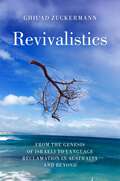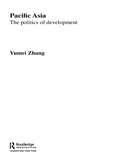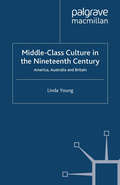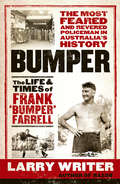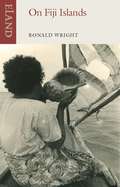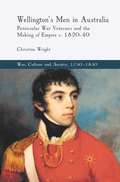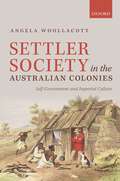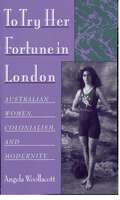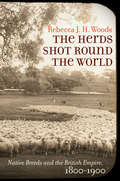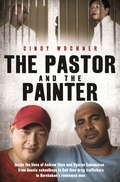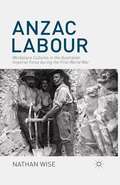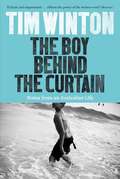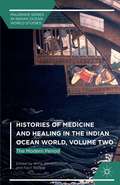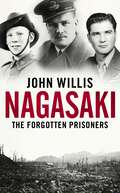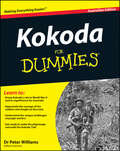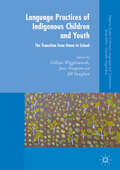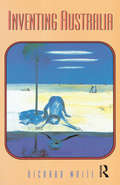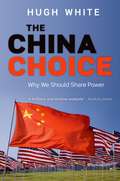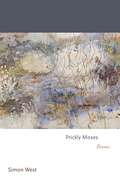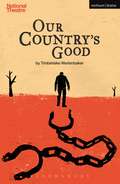- Table View
- List View
Revivalistics: From the Genesis of Israeli to Language Reclamation in Australia and Beyond
by Ghil'ad ZuckermannIn this book, Ghil'ad Zuckermann introduces revivalistics, a new trans-disciplinary field of enquiry surrounding language reclamation, revitalization, and reinvigoration. Applying lessons from the Hebrew revival of the late nineteenth and early twentieth centuries to contemporary endangered languages, Zuckermann takes readers along a fascinating and multifaceted journey into language revival and provides new insights into language genesis. Beginning with a critical analysis of Israeli-the language resulting from the Hebrew revival-Zuckermann's radical theory contradicts conventional accounts of the Hebrew revival and challenges the family tree model of historical linguistics. Revivalistics demonstrates how grammatical cross-fertilization with the revivalists' mother tongues is inevitable in the case of successful "revival languages." The second part of the book then applies these lessons from the Israeli language to revival movements in Australia and globally, describing the "why" and "how" of revivalistics. With examples from the Barngarla Aboriginal language of South Australia, Zuckermann proposes ethical, aesthetic, and utilitarian reasons for language revival and offers practical methods for reviving languages. Based on years of the author's research, fieldwork, and personal experience with language revivals all over the globe, Revivalistics offers ground-breaking theoretical and pragmatic contributions to the field of language reclamation, revitalization, and reinvigoration.
Revivalistics: From the Genesis of Israeli to Language Reclamation in Australia and Beyond
by Ghil'ad ZuckermannIn this book, Ghil'ad Zuckermann introduces revivalistics, a new trans-disciplinary field of enquiry surrounding language reclamation, revitalization, and reinvigoration. Applying lessons from the Hebrew revival of the late nineteenth and early twentieth centuries to contemporary endangered languages, Zuckermann takes readers along a fascinating and multifaceted journey into language revival and provides new insights into language genesis. Beginning with a critical analysis of Israeli-the language resulting from the Hebrew revival-Zuckermann's radical theory contradicts conventional accounts of the Hebrew revival and challenges the family tree model of historical linguistics. Revivalistics demonstrates how grammatical cross-fertilization with the revivalists' mother tongues is inevitable in the case of successful "revival languages." The second part of the book then applies these lessons from the Israeli language to revival movements in Australia and globally, describing the "why" and "how" of revivalistics. With examples from the Barngarla Aboriginal language of South Australia, Zuckermann proposes ethical, aesthetic, and utilitarian reasons for language revival and offers practical methods for reviving languages. Based on years of the author's research, fieldwork, and personal experience with language revivals all over the globe, Revivalistics offers ground-breaking theoretical and pragmatic contributions to the field of language reclamation, revitalization, and reinvigoration.
Pacific Asia
by Yumei ZhangPacific Asia has witnessed arguably the most dynamic economic growth and social transformation in the world since 1945. Inspired by the example of Japan, a number of high performing economies have emerged in the region. Pacific Asia explores this extraordinary pace of development and explains the various factors that lie behind it. It introduces the complex politics of development and sets Pacific Asia in its geographical and socio-cultural context. As well as Japan, the role model of development, Pacific Asia examines the experiences of Malaysia, Indonesia, Thailand, Singapore, South Korea and Taiwan.
Pacific Asia
by Yumei ZhangPacific Asia has witnessed arguably the most dynamic economic growth and social transformation in the world since 1945. Inspired by the example of Japan, a number of high performing economies have emerged in the region. Pacific Asia explores this extraordinary pace of development and explains the various factors that lie behind it. It introduces the complex politics of development and sets Pacific Asia in its geographical and socio-cultural context. As well as Japan, the role model of development, Pacific Asia examines the experiences of Malaysia, Indonesia, Thailand, Singapore, South Korea and Taiwan.
Middle Class Culture in the Nineteenth Century: America, Australia and Britain
by L. YoungDrawing on expressive and material culture, Young shows that money was not enough to make the genteel middle class. It required exquisite self-control and the right cultural capital to perform ritual etiquette and present oneself confidently, yet modestly. She argues that genteel culture was not merely derivative, but a re-working of aristocratic standards in the context of the middle class necessity to work. Visible throughout the English-speaking world in the 1780s -1830s and onward, genteel culture reveals continuities often obscured by studies based entirely on national frameworks.
Bumper: The Life And Times Of Frank 'bumper' Farrell
by Larry WriterThe sprawling saga of legendary Australian cop, Bumper Farrell, the most feared and revered policeman in Australia's history.Frank 'Bumper' Farrell was the roughest, toughest street cop and vice-squad leader Australia has ever seen. Strong as a bull, with cauliflowered ears and fists like hams, Bumper's beat from 1938 to 1976 was the most lawless in the land - the mean streets of Kings Cross and inner Sydney. His adversaries were such notorious criminals as Abe Saffron, Lennie McPherson, Tilly Devine and Kate Leigh and their gangs as well as the hooligans, sly groggers, SP bookies, pimps and spivs.Criminals knew just where they stood: he would catch them, he would hurt them, and then he would lock them away. He was a legendary Rugby League player for Newtown, and represented Australia against England and New Zealand.Here's Bumper Farrell in brutal, passionate and hilarious action . . . saving Ita Buttrose from a stalker; sparking a national scandal when accused of biting off a rival player's ear; beating Lennie McPherson so severely the hard man cried; single-handedly fighting a mob of gangsters in Kings Cross and winning; terrorising the hoons who harassed the prostitutes in the brothel lanes by driving over the top of them; commandeering the police launch to take him home to his beach home, diving overboard in full uniform and catching a wave to shore; dispensing kindness and charity to the poor.Bumper Farrell: lawman, sportsman, larrikin . . . legend.'fascinating . . . [a] fine biography' SYDNEY MORNING HERALD
On Fiji Islands
by Ronald WrightIn little more than a century, Fiji islanders have made the transition from cannibalism to Christianity, from colony to flourishing self-government, without losing their own culture. As Ronald Wright observes, societies that do not eat people are fascinated by those that did, and often used this fact as an excuse to conquer, kill and enslave. Touring cities bustling with Indian merchants, quiet Fijian villages and taking part in communal ceremonies, he attributes the remarkable independence of Fiji to the fact that the indigenous social structure remains intact and eighty-three per cent of the land remains in local hands. Wright tells their story with wit and evident pleasure.
Wellington's Men in Australia: Peninsular War Veterans and the Making of Empire c.1820-40 (War, Culture and Society, 1750 –1850)
by C. WrightAn exploration of the little-known yet historically important emigration of British army officers to the Australian colonies in the aftermath of the Napoleonic Wars. The book looks at the significant impact they made at a time of great colonial expansion, particularly in new south Wales with its transition from a convict colony to a free society.
Settler Society in the Australian Colonies: Self-Government and Imperial Culture
by Angela WoollacottThe 1820s to the 1860s were a foundational period in Australian history, arguably at least as important as Federation. Industrialization was transforming Britain, but the southern colonies were pre-industrial, with economies driven by pastoralism, agriculture, mining, whaling and sealing, commerce, and the construction trades. Convict transportation provided the labour on which the first settlements depended before it was brought to a staggered end, first in New South Wales in 1840 and last in Western Australia in 1868. The numbers of free settlers rose dramatically, surging from the 1820s and again during the 1850s gold rushes. The convict system increasingly included assignment to private masters and mistresses, thus offering settlers the inducement of unpaid labourers as well as the availability of land on a scale that both defied and excited the British imagination. By the 1830s schemes for new kinds of colonies, based on Edward Gibbon Wakefield's systematic colonization, gained attention and support. The pivotal development of the 1840s-1850s, and the political events which form the backbone of this story were the Australian colonies' gradual attainment of representative and then responsible government. Through political struggle and negotiation, in which Australians looked to Canada for their model of political progress, settlers slowly became self-governing. But these political developments were linked to the frontier violence that shaped settlers' lives and became accepted as part of respectable manhood. With narratives of individual lives, Settler Society shows that women's exclusion from political citizenship was vigorously debated, and that settlers were well aware of their place in an empire based on racial hierarchies and threatened by revolts. Angela Woollacott particularly focuses on settlers' dependence in these decades on intertwined categories of unfree labour, including poorly-compensated Aborigines and indentured Indian and Chinese labourers, alongside convicts.
To Try Her Fortune in London: Australian Women, Colonialism, and Modernity
by Angela WoollacottBetween 1870 and 1940, tens of thousands of Australian women were drawn to London, their imperial metropolis and the center of the publishing, art, musical, theatrical, and educational worlds. Even more Australian women than men made the pilgrimage "home," seeking opportunities beyond those available to them in the Australian colonies or dominion. In tracing the experiences of these women, this volume reveals hitherto unexamined connections between whiteness, colonial status, gender, and modernity.
The Herds Shot Round the World: Native Breeds and the British Empire, 1800–1900 (Flows, Migrations, and Exchanges)
by Rebecca J. WoodsAs Britain industrialized in the early nineteenth century, animal breeders faced the need to convert livestock into products while maintaining the distinctive character of their breeds. Thus they transformed cattle and sheep adapted to regional environments into bulky, quick-fattening beasts. Exploring the environmental and economic ramifications of imperial expansion on colonial environments and production practices, Rebecca J. H. Woods traces how global physiological and ecological diversity eroded under the technological, economic, and cultural system that grew up around the production of livestock by the British Empire. Attending to the relationship between type and place and what it means to call a particular breed of livestock "native," Woods highlights the inherent tension between consumer expectations in the metropole and the ecological reality at the periphery.Based on extensive archival work in the United Kingdom, New Zealand, and Australia, this study illuminates the connections between the biological consequences and the politics of imperialism. In tracing both the national origins and imperial expansion of British breeds, Woods uncovers the processes that laid the foundation for our livestock industry today.
The Pastor and the Painter: Inside the lives of Andrew Chan and Myuran Sukumaran – from Aussie schoolboys to Bali 9 drug traffickers to Kerobokan's redeemed men
by Cindy WocknerA very personal look at Andrew Chan and Myuran Sukumaran. Cindy Wockner was a journalist reporting the story of two surly drug smugglers. She was there from the beginning and would become a good friend of the two changed men.At 12.35 a.m. on 29 April 2015, Andrew Chan and Myuran Sukumaran were led out in front of a firing squad. Strapped to wooden crosses, they looked straight down the barrels of their killers' rifles. On that day, the Indonesian government did not execute two drug smugglers, they executed a pastor and a painter.But who were Andrew and Myuran?In 2005, the lure of drugs, money, fast cars and a better life led them and seven other Australians into a smuggling plot to import heroin from Indonesia to Australia. Unbeknownst to them all, the Australian Federal Police knew of their plan and tipped off the Indonesian authorities. Charged with drug trafficking, Myuran and Andrew were found guilty and sentenced to death. Andrew was 21 years old. Myuran was 24.At the time, Cindy Wockner was the Indonesia correspondent for News Limited: for a decade she covered their story and she got to know Myuran, Andrew and their families. They let her into their lives and she watched them transform from angry, defiant young inmates into fully rehabilitated, good men.This is the intimate, and untold, story of Andrew and Myuran. It details their redemption inside Kerobokan prison and their passion for helping others - through Andrew's growing commitment to his faith and Myu's burgeoning artistic talent. It reveals the boys they were and the men they became, in a potent cautionary tale and a poignant reminder of what we all lose when we ignore the power of mercy.'gripping' DAILY TELEGRAPH on Cindy Wockner and Madonna King's BALI 9
Anzac Labour: Workplace Cultures in the Australian Imperial Force during the First World War
by Nathan WiseAnzac Labour explores the horror, frustration and exhaustion surrounding working life in the Australian Imperial Force during the First World War. Based on letters and diaries of Australian soldiers, it traces the history of work and workplace cultures through Australia, the shores of Gallipoli, the fields of France and Belgium, and the Near East.
The Boy Behind the Curtain: Notes From an Australian Life
by Tim Winton'Eclectic and impassioned, a collection that affirms the power of the written word' ObserverThe Boy Behind the Curtain is a portrait of a life, a place and a man. In this deeply personal collection of true stories and essays Tim Winton shows how moments from his childhood and life growing up have shaped his views on class, faith, fundamentalism, the environment, and - most pressingly - how all his experiences have made him a writer. From unexpected links between car crashes and faith, surfing and writing, to the story of his upbringing in the changing Australian landscape, The Boy Behind the Curtain is an impassioned, funny, joyous, astonishing collection of memories, and Winton's most personal book to date.
Histories of Medicine and Healing in the Indian Ocean World, Volume Two: The Modern Period (Palgrave Series in Indian Ocean World Studies)
by Anna Winterbottom Facil TesfayeThe Indian Ocean has been the site of multiple interconnected medical interactions that may be viewed in the context of the environmental factors connecting the region. This interdisciplinary work presents essays on various aspects of disease, medicine, and healing in different locations in and around the Indian Ocean from the eighteenth century to the contemporary era. The essays explore theoretical explanations for disease, concepts of fertility, material culture, healing in relation to diplomacy and colonialism, public health, and the health of slaves and migrant workers. This book will appeal to academics and graduate students working in the fields of medical and scientific history, as well as in the growing fields of Indian Ocean studies and global history.
Nagasaki: The Forgotten Prisoners
by John WillisThis is one of the most remarkable untold stories of the Second World war. At 11.02 am on an August morning in 1945 America dropped the world's most powerful atomic bomb on the Japanese port city of Nagasaki. The most European city in Japan was flattened to the ground 'as if it had been swept aside by a broom'. More than 70,000 Japanese were killed. At the time, hundreds of Allied prisoners of war were working close to the bomb's detonation point, as forced labourers in the shipyards and foundries of Nagasaki.These men, from the Dales of Yorkshire and the dusty outback of Australia, from the fields of Holland and the remote towns of Texas, had already endured an extraordinary lottery of life and death that had changed their lives forever. They had lived through nearly four years of malnutrition, disease, and brutality. Now their prison home was the target of America's second atomic bomb.In one of the greatest survival stories of the Second World War, we trace their astonishing experiences back to bloody battles in the Malayan jungle, before the dramatic fall of Fortress Singapore, the mighty symbol of the British Empire. This abject capitulation was followed by surrender in Java and elsewhere in the East, condemning the captives to years of cruel imprisonment by the Japanese. Their lives grew evermore perilous when thousands of prisoners were shipped off to build the infamous Thai-Burma Railway, including the Bridge on the River Kwai. If that was not harsh enough, POWs were then transported to Japan in the overcrowded holds of what were called hell ships. These rusty buckets were regularly sunk by Allied submarines, and thousands of prisoners lived through unimaginable horror, adrift on the ocean for days. Some still had to endure the final supreme test, the world's second atomic bomb.The prisoners in Nagasaki were eyewitnesses to one of the most significant events in modern history but writing notes or diaries in a Japanese prison camp was dangerous. To avoid detection, one Allied prisoner buried his notes in the grave of a fellow POW to be reclaimed after the war, another wrote his diary in Irish. Now, using unpublished and rarely seen notes, interviews, and memoirs, this unique book weaves together a powerful chorus of voices to paint a vivid picture of defeat, endurance, and survival against astonishing odds.
Kokoda Trail for Dummies
by Peter WilliamsEverything you need to know about the Kokoda Trail and its place in Australian history Interest in the Kokoda Trail is growing rapidly among many Australians, both for its attraction as a hiking destination and for its historical significance. Kokoda For Dummies offers a fast track tool for learning everything you need to know about this unique thoroughfare, in one concise volume. Part history book, part practical guide, Kokoda For Dummies is perfect both for those considering following our Diggers’ footsteps along ‘the track’ or armchair travellers who want to learn about its history. Covering the full history of the Kokoda Trail, from its beginnings as an overland mail route to the fierce battles between the Australians and the Japanese that took place along its length during World War II, the book also includes important information on walking the trail yourself. From the steps you need to take to get ready to what to bring, Kokoda For Dummies is the definitive resource for anyone looking for a comprehensive overview of this significant landmark. Focuses on walking the track as a pilgrimage and a history lesson for history buffs and hiking enthusiasts alike Covers the health and safety concerns involved with walking the track, including a basic Kokoda itinerary Contains eyewitness accounts of the Kokoda battles gleaned from interviews conducted with Australian and Japanese war veterans A comprehensive but accessible history of the Kokoda Trail and its significance to Australia, in one volume.
Kokoda Trail for Dummies
by Peter WilliamsEverything you need to know about the Kokoda Trail and its place in Australian history Interest in the Kokoda Trail is growing rapidly among many Australians, both for its attraction as a hiking destination and for its historical significance. Kokoda For Dummies offers a fast track tool for learning everything you need to know about this unique thoroughfare, in one concise volume. Part history book, part practical guide, Kokoda For Dummies is perfect both for those considering following our Diggers’ footsteps along ‘the track’ or armchair travellers who want to learn about its history. Covering the full history of the Kokoda Trail, from its beginnings as an overland mail route to the fierce battles between the Australians and the Japanese that took place along its length during World War II, the book also includes important information on walking the trail yourself. From the steps you need to take to get ready to what to bring, Kokoda For Dummies is the definitive resource for anyone looking for a comprehensive overview of this significant landmark. Focuses on walking the track as a pilgrimage and a history lesson for history buffs and hiking enthusiasts alike Covers the health and safety concerns involved with walking the track, including a basic Kokoda itinerary Contains eyewitness accounts of the Kokoda battles gleaned from interviews conducted with Australian and Japanese war veterans A comprehensive but accessible history of the Kokoda Trail and its significance to Australia, in one volume.
Language Practices of Indigenous Children and Youth: The Transition from Home to School (Palgrave Studies in Minority Languages and Communities)
by Gillian Wigglesworth Jane Simpson Jill VaughanThis book explores the experiences of Indigenous children and young adults around the world as they navigate the formal education system and wider society. Profiling a range of different communities and sociolinguistic contexts, this book examines the language ecologies of their local communities, schools and wider society and the approaches taken by these communities to maintain children’s home languages. The authors examine such complex themes as curriculum, translanguaging, contact languages and language use as cultural practice. In doing so, this edited collection acts as a first step towards developing solutions which address the complexity of the issues facing these children and young people. It will appeal to students and scholars of sociolinguistics, applied linguistics and community development, as well as language professionals including teachers, curriculum developers, language planners and educators.
Inventing Australia: Images And Identity, 1688-1980 (Australian Experience Ser. #No. 3)
by Richard White'White sets himself a most ambitious task, and he goes remarkably far to achieving his goals. Very few books tell so much about Australia, with elegance and concision, as does his' - Professor Michael Roe'Stimulating and informative. an antidote to the cultural cringe' - Canberra Times'To be Australian': what can that mean? Inventing Australia sets out to find the answers by tracing the images we have used to describe our land and our people - the convict hell, the workingman's paradise, the Bush legend, the 'typical' Australian from the shearer to the Bondi lifesaver, the land of opportunity, the small rich industrial country, the multicultural society.The book argues that these images, rather than describing an especially Australian reality, grow out of assumptions about nature, race, class, democracy, sex and empire, and are 'invented' to serve the interests of particular groups.There have been many books about Australia's national identity; this is the first to place the discussion within an historical context to explain how Australians' views of themselves change and why these views change in the way they do.
Inventing Australia
by Richard White'White sets himself a most ambitious task, and he goes remarkably far to achieving his goals. Very few books tell so much about Australia, with elegance and concision, as does his' - Professor Michael Roe'Stimulating and informative. an antidote to the cultural cringe' - Canberra Times'To be Australian': what can that mean? Inventing Australia sets out to find the answers by tracing the images we have used to describe our land and our people - the convict hell, the workingman's paradise, the Bush legend, the 'typical' Australian from the shearer to the Bondi lifesaver, the land of opportunity, the small rich industrial country, the multicultural society.The book argues that these images, rather than describing an especially Australian reality, grow out of assumptions about nature, race, class, democracy, sex and empire, and are 'invented' to serve the interests of particular groups.There have been many books about Australia's national identity; this is the first to place the discussion within an historical context to explain how Australians' views of themselves change and why these views change in the way they do.
Prickly Moses: Poems
by Simon WestCompelling poems that celebrate language as it encounters the nameless variety of the natural world, from Australia to ItalyAn uncanny blend of the external and the intimate has been a hallmark of Simon West’s poetry for nearly twenty years. In this new collection, the Australian poet and Italianist delights in the transforming and endlessly varied powers of naming and speaking. West’s intensely regional focus stands in dialogue with Europe and antiquity. Landscapes reveal the tangle of their historical dimensions, as the rivers of both the Goulburn Valley in southeastern Australia and the Po Valley in northern Italy merge and flow into the wider currents of the Southern Ocean. Again and again, language and the senses throw themselves into the nameless riot of the world, from eucalypts and clouds to a medieval bell tower and the sounds a pencil makes as it crosses a page.
Our Country's Good (Modern Plays)
by Timberlake WertenbakerObserved by a lone, mystified Aboriginal Australian, the first convict ship arrives in Botany Bay, 1788, crammed with England's outcasts. Colony discipline in this vast and alien land is brutal. Three proposed public hangings incite an argument: how best to keep the criminals in line, the noose or a more civilised form of entertainment?The ambitious Second Lieutenant Ralph Clark steps forward with a play. But as the mostly illiterate cast rehearses, and a sense of common purpose begins to take hold, the young officer's own transformation is as marked and poignant as that of his prisoners.A profoundly humane piece of theatre, steeped in suffering yet charged with hope, Timberlake Wertenbaker's Our Country's Good (based on a true story) celebrates the redemptive power of art.It premiered at the Royal Court Theatre, london, in 1988, winning the Laurence Olivier Play of the Year Award. This edition was published to coincide with a major revival production at the National Theatre, which opened on 19 August 2015.
Our Country's Good: Based On The Novel 'the Playmaker' By Thomas Keneally (Modern Plays)
by Timberlake WertenbakerObserved by a lone, mystified Aboriginal Australian, the first convict ship arrives in Botany Bay, 1788, crammed with England's outcasts. Colony discipline in this vast and alien land is brutal. Three proposed public hangings incite an argument: how best to keep the criminals in line, the noose or a more civilised form of entertainment?The ambitious Second Lieutenant Ralph Clark steps forward with a play. But as the mostly illiterate cast rehearses, and a sense of common purpose begins to take hold, the young officer's own transformation is as marked and poignant as that of his prisoners.A profoundly humane piece of theatre, steeped in suffering yet charged with hope, Timberlake Wertenbaker's Our Country's Good (based on a true story) celebrates the redemptive power of art.It premiered at the Royal Court Theatre, london, in 1988, winning the Laurence Olivier Play of the Year Award. This edition was published to coincide with a major revival production at the National Theatre, which opened on 19 August 2015.
